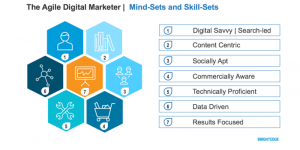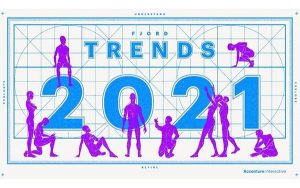The problem with media today is awful, intrusive, repetitive, irrelevant advertising, right?
It’s hard to argue with that assertion, given that we’ve all been bombarded with such advertising—and more and more consumers are using ad-blocking software to attempt to escape it. But “badvertising” is only part of the story. Because the reality is that outdated media metrics—the way that we measure and value consumers’ interactions with content—help drive not only obnoxious advertising but obnoxious editorial content. Even so, advertising still gets the lion’s share of the blame.
Twenty years into the mainstream web revolution (1996 was the year that America Online introduced $ 19.95-per-month flat-rate pricing, which made accessing content on the internet easy and affordable for millions), many publishers, marketers and their agencies are still focused on “uniques” and “pageviews.” This “circulation” mentality came from traditional media—print publications—though early web marketers put their own unpleasant spin on what they were after: “eyeballs.”
Chasing after eyeballs and chasing after growth—since the web was exploding in popularity, every publisher felt pressure to grow just as explosively—led to the creation of more and more inventory. Publishers not only crammed banner and skyscraper display ads all over their pages—even in the deepest depths where readers were unlikely to ever scroll—but created user-unfriendly means of serving up content. Like endless slideshows that were brazenly designed to drum up the number of pages served.
A side effect of blaming advertising for all that’s wrong with the web—rather than the obsession with eyeballs that begets bad advertising—is that it endangers the free and open web. After all, most professionally produced content on the web is mostly or entirely supported by advertising. Hate all advertising, block all the ads, and you starve both unscrupulous and worthy content producers.
So what can marketers do? Most importantly, advertisers need to demand more focus on metrics that are about user engagement rather than mere eyeballs or “clicks” or “click-throughs.”
The most innovative publishers and platforms are already part of this paradigm shift, which is why Snapchat, for one, has become a marketing-world darling. Beyond its remarkable usage among millennials—according to Nielsen, Snapchat reaches 41% of all 18 to 34 year-olds in the U.S. every day—the company has been inventing engaging new ways for advertisers to connect with consumers.
Like Sponsored Lenses, which, in Snapchat’s words, “offer a completely new take on brand activation, offering not just an impression, but ‘play time’ — the time Snapchatters spend playing with the interactive ad you’ve created.” Taco Bell is among the marketers that have experimented with Snapchat Sponsored Lenses (have you created your own Taco-headed animated selfie yet?). According to Snapchat’s internal data, “On average, Snapchatters play with a Sponsored Lens for 20 seconds.”
Or consider Watchwith, a company in the news in late June because of its acquisition of Arris’ Media Analysis Framework (MAF) unit. Watchwith is all about creating what it calls “contextually relevant native video advertising at scale.” The idea is that consumers are much more likely to engage with an ad that speaks to their interests and actually has something to do with the content they’re consuming. Watchwith builds a library of time-coded metadata around individual programs (the artificial intelligence tech of Arris’ MAF greatly expands that capability) so that, for instance, an interactive overlay about a marketer’s new interior paint line can be inserted into premium video at the exact moment the host of a home improvement show is talking about repainting a bedroom.
And, of course, existing contextual in-image and in-content ads that use technologies such as image recognition and real-time targeting have offered 81 percent viewability rates for several years already, without annoying readers.
In other words, there are emerging and existing ad formats focused on giving consumers entertaining, relevant experiences. In January, the Interactive Advertising Bureau acknowledged how much the ground has been shifting around video advertising alone when it released its Digital Video Ad Glossary. Educating publishers, marketers and agencies about the possibilities—particularly around what the IAB defines as “dynamic creative” (an ad “customized in advance and/or able to transform itself upon delivery to target relevant audience segments”)—is half the battle.
But the other half of the battle is coming to an industry-wide consensus about how to measure “engagement” or “effectiveness” (or whatever you want to call it) in a post-“eyeballs” world.
Because we already know all too well how to measure what doesn’t work.
Digital & Social Articles on Business 2 Community(54)





